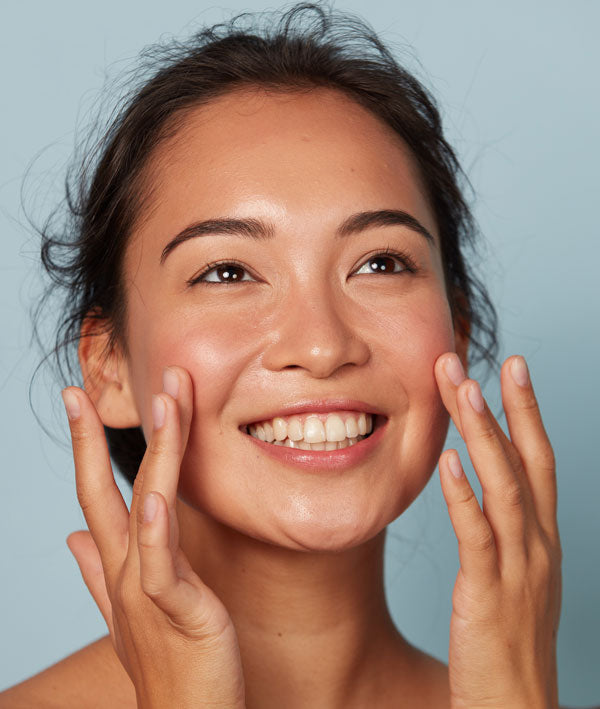Retinol is finicky. You want to use enough to fully unlock the benefits, but at the same time, overuse can put you at risk of experiencing aggravating side effects. In this quick guide, we’ll discuss how much retinol you should be using when you apply it, as well as how often.
What is Retinol?
Retinol is a skincare topical with decades of research behind it that back up its benefits. This vitamin A derivative has been shown to boost the production of collagen and elastin, which in turn helps soften fine lines and wrinkles and improve firmness and elasticity. It also increases skin cell turnover, which is great for fighting breakouts and reducing the appearance of hyperpigmentation. Given its wide range of benefits, it’s no wonder retinol is such a sought after treatment.
How Much and How Often Should You Use Retinol?
One of the biggest mistakes people make when using retinol is applying more than is necessary. Retinol is potent, and a little goes a long way. All that is needed for your face and neck is a pea-sized amount, which will create a thin, even layer over the skin.
The answer to how often you should use retinol will depend on the strength of the specific formula you’ve chosen, as well as your skin’s tolerance for the ingredient. When first adding retinol to your routine, it’s essential that you work it in gradually to allow your skin to adjust. Start off by applying it twice per week in the evening, and sticking with that routine for a few weeks. If your skin is tolerating the treatment, you can begin to slowly increase your usage.
Some people may find that they can work up to applying it every night, whereas others may find their skin is best suited for every other night (or less!). Pay attention to how your skin reacts, and cut back your usage if you're experiencing intense side effects.
What Are the Side Effects of Retinol?
The most common side effects that people experience when using retinol (especially when working it into their routine for the first time) include dryness, flaking, redness, and aggravation. Retinol also increases the skin’s sensitivity to the sun, which means your skin may be more prone to burning. Those with acne-prone skin may also experience purging at first, but this typically will get better in a few weeks.
What Happens If You Use Too Much
If you apply too much retinol at once – or apply it too frequently – you’ll greatly increase your risk of experiencing some of the negative side effects mentioned above. While most will experience some side effects when their skin is first adjusting to the treatment, you can dramatically decrease your risk by taking a more conservative approach to your application. As tempting as it may be, avoid over applying retinol (both in terms of frequency and amount), and cut back your usage if the side effects are becoming too extreme.
Best Products to Use with Retinol
In order to minimize dryness caused by retinol, consider using it alongside a hyaluronic acid serum. This gentle hydrating formula will draw water to your skin, helping to counteract the drying effects of the treatment.
Since you can only use retinol in the evening, you may also want to use a complementary serum in the morning. A vitamin C serum is an excellent choice, as it will provide anti-aging benefits while also brightening the complexion.
Last but certainly not least, always be sure to wear sunscreen during the day. Since retinol will increase your skin’s sun sensitivity, it’s crucial that you do your part to keep your complexion protected.
Benefits of Retinol
Retinol is one of the most effective over-the-counter ingredients for improving skin texture, reducing fine lines, and clearing up breakouts. But it can also be irritating if not used correctly. So, how much retinol to use? The answer depends on your skin type, experience level, and goals.
Retinol works by speeding up cell turnover and stimulating collagen production. This leads to smoother, brighter skin over time. It can fade dark spots, reduce the appearance of pores, and help with acne. It also helps firm the skin and soften rough patches caused by sun damage or dehydration. Used consistently, it’s one of the most powerful tools in a skincare routine.
Retinol Use for Beginners
If you are unsure how much retinol to use and if you’re new to retinol, start slow. Begin with a low percentage—around 0.25% to 0.3%—just two to three nights per week. This gives your skin time to adjust without peeling or redness. Apply a pea-sized amount to your face (yes, that’s enough). Too much product doesn’t speed up results; it only increases the chance of irritation.
Not sure what percentage retinol should I use? If you have sensitive or dry skin, stick with under 0.5% for the first few months. Normal or oily skin types may tolerate 0.5% to 1% after a few weeks of consistent use.
Once your skin builds tolerance, you can consider moving up. But always ask: what strength retinol should I use now? Let your skin be the guide. Redness, flaking, or stinging are signs to dial it back.
Consistency is more important than strength. Retinol rewards patience. Don’t chase results with high percentages too fast.
When in doubt, start low, go slow, and moisturize well. A balanced approach ensures long-term results without damaging your skin barrier—and that’s the real goal.






